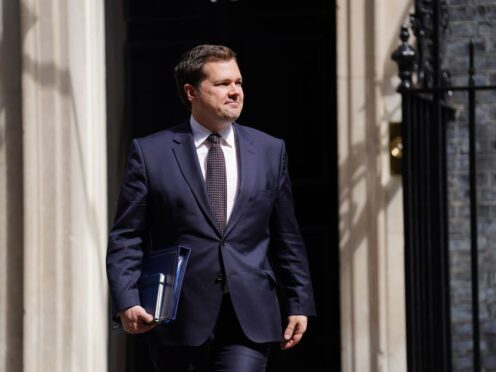Former immigration minister Robert Jenrick has called for a cap on net immigration, claiming a “far more restrictive system” is needed.
Writing in The Sunday Telegraph, Mr Jenrick says the Government’s recently-passed Rwanda Bill will soon “join the graveyard of policies” that failed to tackle illegal migration, but called legal migration “a bigger scandal”.
He said: “As offensive and dangerous as illegal migration is, the bigger scandal is the story of legal migration because the numbers involved are so much greater.
“Last year, there were about 30,000 illegal small boat arrivals, but this was dwarfed by the 1.2 million people who arrived here perfectly legally.”
According to Mr Jenrick, net migration needs to be wound back to “the tens of thousands”.
“We need to create a far more restrictive system that establishes the UK as the grammar school of the Western world, focusing on attracting the high skill, high wage migrants who will be net contributors to the economy,” he said.
“The only way politicians can look voters in the eye and guarantee they can meet their promises to reduce net migration is to introduce a cap which would serve as a democratic lock on numbers.”
He added the cap “should be voted on by all MPs in Parliament in a Migration Budget Debate, alongside forecasted impacts of immigration on housing, infrastructure and public services”.
Mr Jenrick resigned as immigration minister in December in protest at Prime Minister Rishi Sunak’s Rwanda deportation plan, arguing it would not act as a strong enough deterrent to stop asylum seekers arriving via small boats.
Home Office minister Chris Philp declined to set a limit on net immigration when asked for his response to Mr Jenrick’s demand.
Mr Philp told the BBC’s Sunday With Laura Kuenssberg programme: “I’m not in a position to sit here and advocate for a hard cap today. But what I can say is that we’re taking measures that have been enacted and are now being implemented to reduce legal migration by about 300,000 a year. That’s by significantly increasing salary thresholds. It’s by reducing the numbers of dependents who can come in with migrants.
“I think the British public do want us to control, to significantly reduce migration, both legal migration as well as stop illegal migration.”
Mr Philp also said the Government is “committed to substantially reducing legal migration”.
He added: “We don’t think it’s right to have large-scale, low-skilled migration. We want a much smaller number of high-skilled migrants.”
